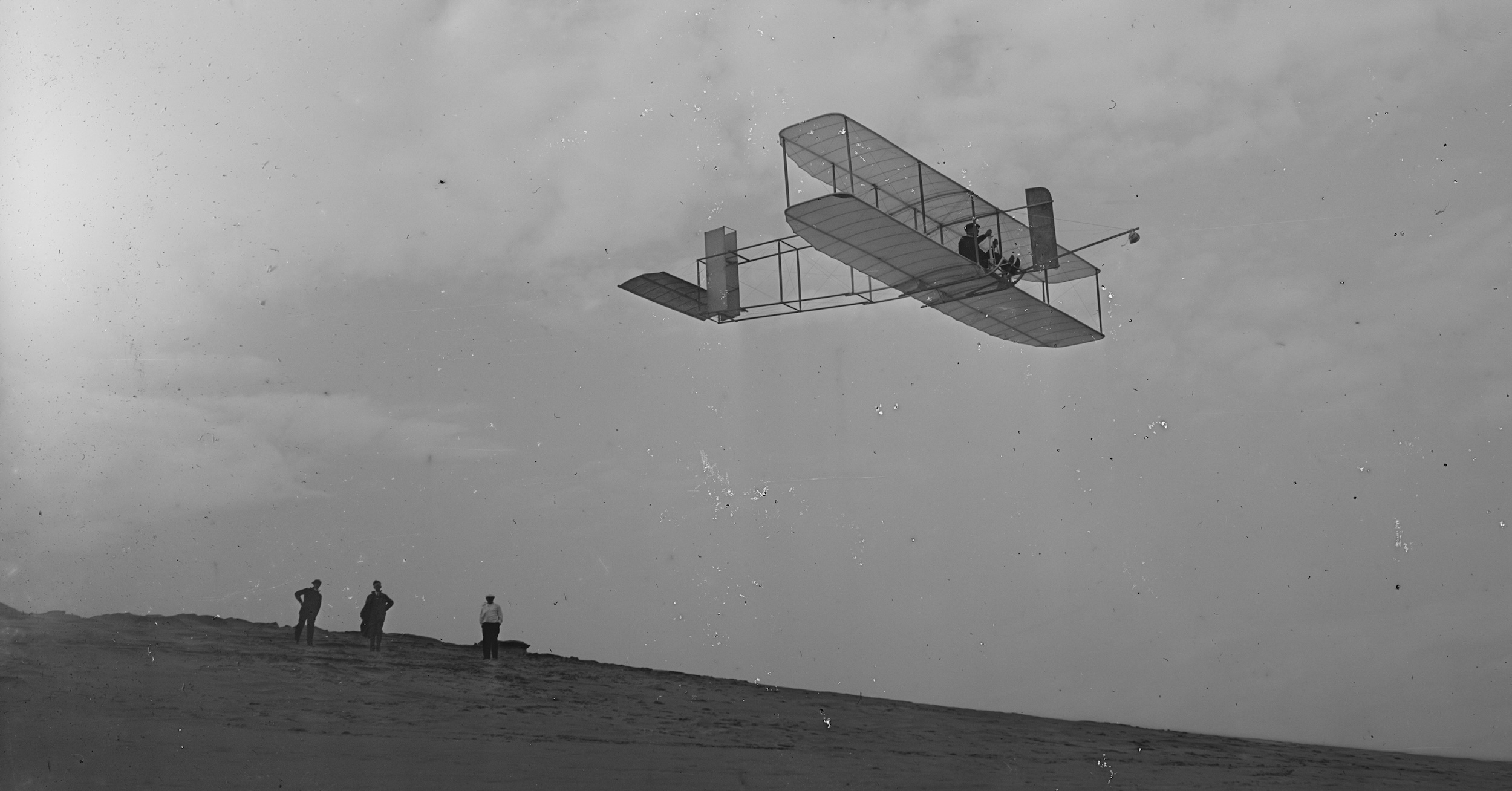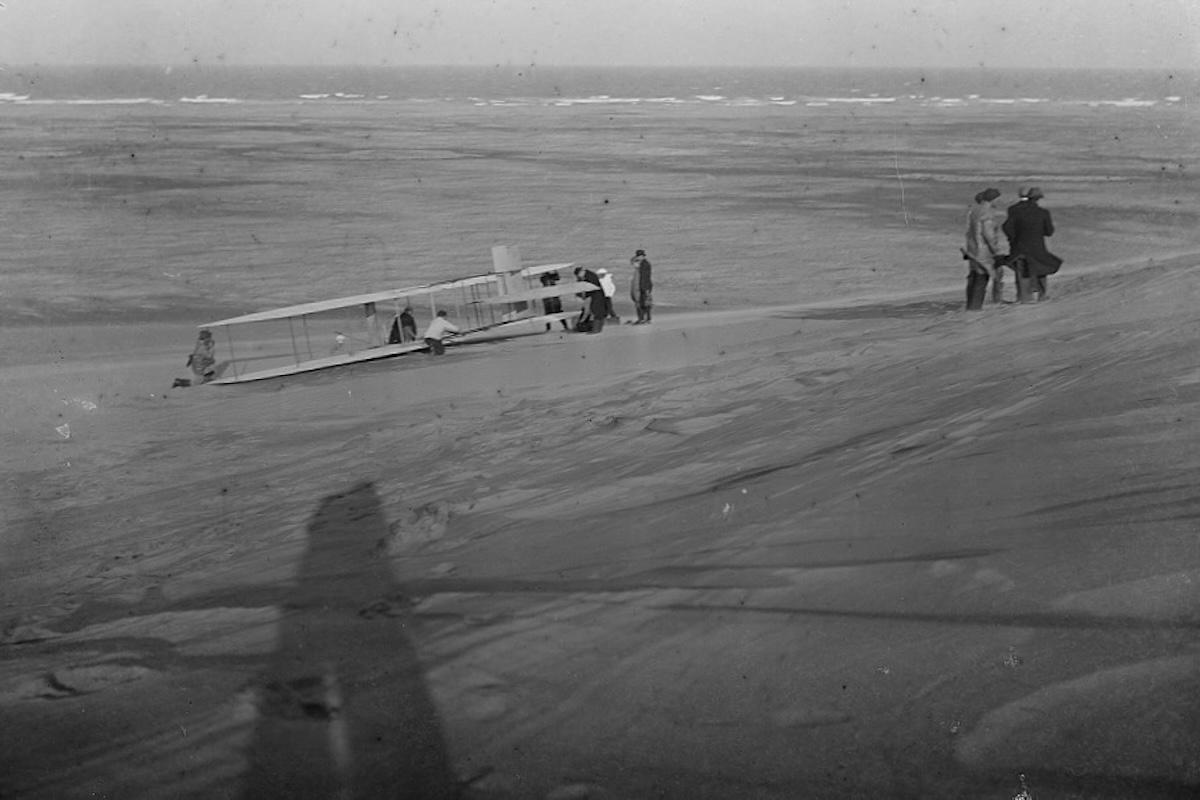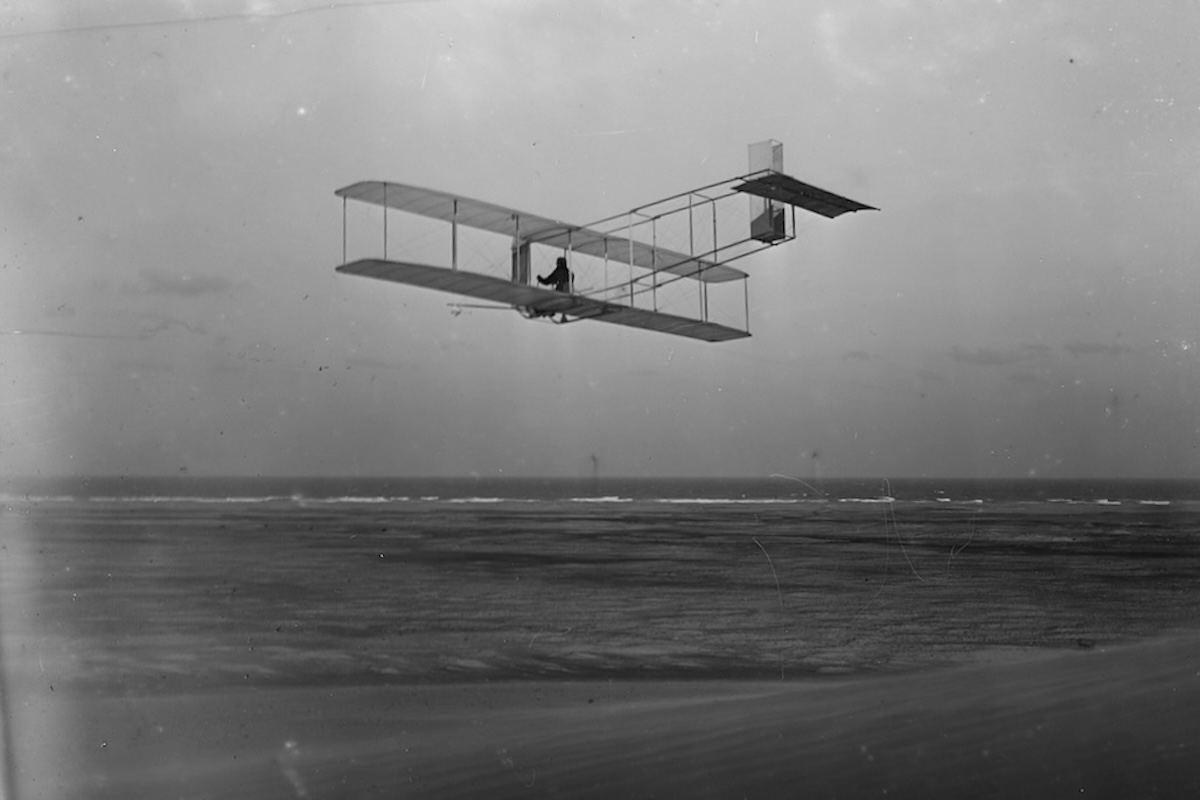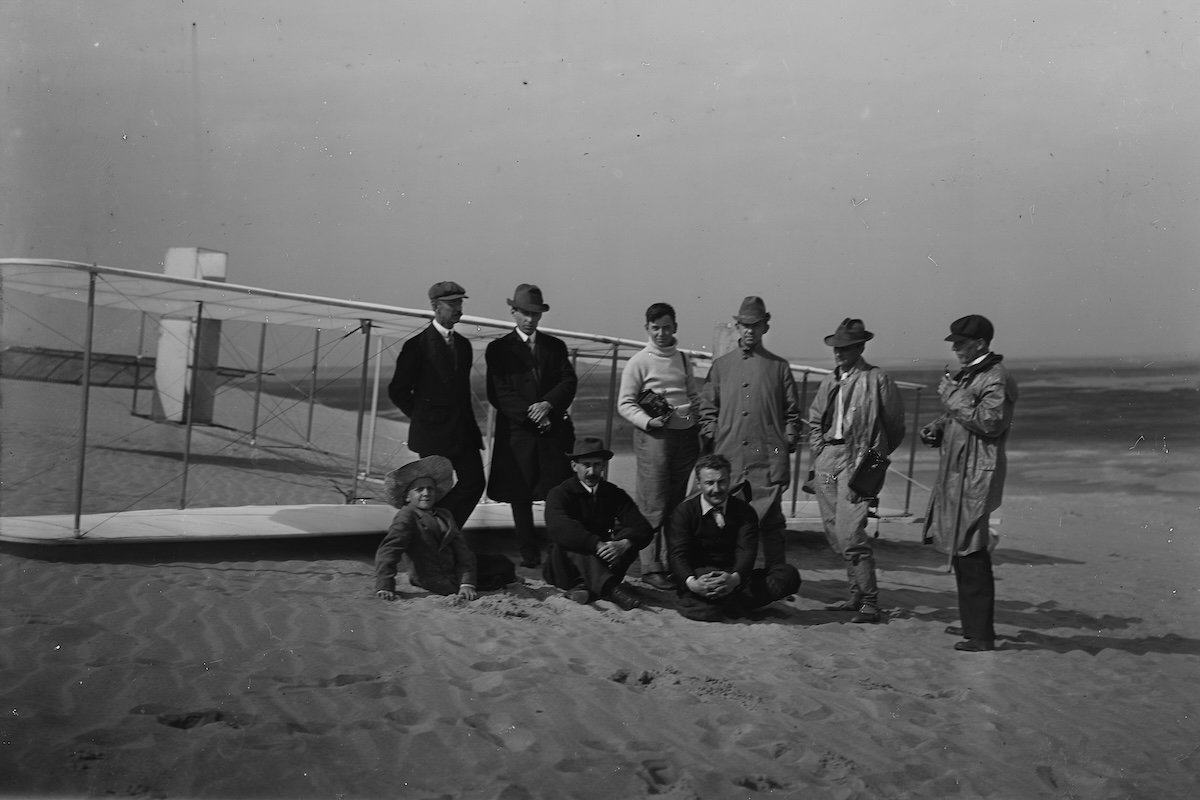
Christmas was finished for me after my parents gave me a copy of Aircraft Aircraft 2 by John W.R. Taylor. That would have been my sixth or seventh birthday. Make no mistake about it, though; I was still happy to go through the motions and collect my Christmas booty from under the tree and gorge myself on the dinner bounty my mother presented a few hours later. Not that I was really hungry. I had already demolished the Terry’s Chocolate Orange shortly after reaching past the tchotchkes and pulling it from the toe of my Christmas stocking. It had ‘magically’ appeared at the foot of my bed in the wee hours of Christmas morning.
You see, after reading Taylor’s book and its coverage of the early pioneers of aviation, my boyhood notion of the rather fanciful, hocus pocus festival on the 25th came in a dim and distant second place to a much more significant event occurring eight days before. On my calendar that was, of course, Wrightmas. It falls on December 17th each year and celebrates the Wright Brothers first successful powered flight at Kitty Hawk, North Carolina in 1903.
With the publication of the popular, acclaimed biographer David McCullough’s The Wright Brothers 3 in 2015, the full story of the Wrights — which extends many years both before and after the December 17th milestone — has become much more well-known. Deservedly so. I understand the film rights for McCullough’s book were snapped up by Tom Hanks long before the book ever saw your nearest Barnes and Noble or Waterstones. I’m not sure about anybody else but I can’t wait to see what Hanks’ capable hands produce on the screen, either large or small. For those who really want to go Wright-crazy, though, I highly recommend The Bishop’s Boys: A Life of Wilbur and Orville Wright 4 by Tom D. Crouch. In fact, if the ship is going down and you only have time to read one, I would actually recommend the latter.

It was Crouch’s book that first enlightened me to the fact that the Wright’s success could hardly be contained to a single date. However, at the time, The Dayton Evening Herald reported (on the 18th) the Wrights’ accomplishment at Kitty Hawk on par with a story about a massive fire at the Canby Building in Dayton and Secretary McAdoo’s ascendency to the post of Police Commissioner. « Dayton Boys Fly Airship » 5 was the terse headline in modest typeface, followed by the pronouncement that the « problem of aerial navigation solved ». And on to the other news of the day.
There are two things which particularly impress me about the Wrights’ story as told in The Bishop’s Boys: the first is the stunningly meticulous research program the Wrights set up in their Dayton bicycle shop. It’s attention to detail and rigour would be a worthy model for any present-day technology development program. The eventual success of the Wrights was in no way guaranteed. But their approach gave them the best possible chance of succeeding. Their tenacity in the face of persistent failure is also breathtaking. During this period they strenuously avoided the spotlight — a refreshing contrast to today where apparently it’s okay to be famous simply for being famous. It seemed the Wrights eventually wanted the work to speak for itself — whether it be a success or failure.

The second remarkable fact about the Wrights from Crouch is their accomplishments were not immediately recognised: worldwide acclaim for what they accomplished really only came five years after the fact and ironically, across the Atlantic in Europe. In 1908 the brothers demonstrated a much more refined Wright Flyer at the Hunaudières race course at Le Mans, France in 1908. Yes, the Wrights actually had to leave the United States in order to finally receive the recognition they so richly deserved. Yet, you don’t read about them complaining. Besides, the Wrights were likely too busy for any of that. During this period they were preoccupied with trying to protect the intellectual property of their invention. An effort, sadly for them and great for the rest of us, never amounted to very much.
However, it's worth noting the Wrights did not labour in splendid isolation and come up with every idea on their own. The interraction of the brothers with other contemporaneous leading lights of aeronautical engineeing is described in detail in 2023's Flight Not Improbable: Octave Chanute and the Worldwide Race Toward Flight 6 by Simine Short. It is also a worthwhile read for Wright aficionados given it embeds the Wright's accomplishments in a broader historical context.
Regardless of precisely how it was achieved, in a complicated world full of opposing forces trying to tear us apart, I think most of us can agree the Wrights represent the very best of American creativity, ingenuity, industriousness and entrepreneurial drive delivered in a quiet, unassuming, self-effacing presentation. I would go so far as to say if your kids want to grow up to be more like the Wrights, as a parent, you could do much worse.

Recently, I was reminded of the absolutely essential role gliders played in the Wrights remarkable story. Both before the fact, in order to develop their eventual powered variant, but also after. As late as 1911 — and perhaps even later — the Wrights were still experimenting with gliders, slope soaring to a record of nine minutes and 45 seconds aloft over the familiar dunes at Kitty Hawk, on October 24 of that year.
Knowing the Wrights as they are portrayed in their biographies, it’s reasonable to assume they were still working in pursuit of incremental technical improvements to their flying machines to make them more commercially viable — hunting for a little competitive advantage in an increasingly competitive field.
But I also like to think they might have been at the top of a beach dune in that fall of 1911 for the same reason as might be the case for the rest of us: because there is nothing quite like the magic of launching out over the slope and harnessing a rising column of air with a motorless aircraft under our control. In other words, they were slope soaring at Kitty Hawk that year because it was, above all else, just so much fun.
©2024 Terence C. Gannon
1 The reference for this most appropriate quote is an excellent article by Mary Bellis entitled Quotes of the Wright Brothers: Orville and Wilbur Wright's Thoughts on Flight and Life which was published on the ThoughtCo. website in June of 2019.
2 Although it's been out of print for decades, it's still fairly easy to track down copies of Aircraft Aircraft (ISBN 9780600301240) what with all the online bookstores such as AbeBooks for example. However, we recommend you first try your local used bookstore — they could use your business a lot more than the online outlets.
3 David McCullough'sThe Wright Brothers is still widely available online and at your local new or used bookstore.
4 Similarly, Tom Crouch'sThe Bishop’s Boys: A Life of Wilbur and Orville Wright is easily found although not quite as easily as McCullough's book.
5 You can view the December 18th, 1903 article headlined « Dayton Boys Fly Airship » in its original context on Newspapers.com. I feel this article nearly worth the price of a subscription alone. However, there is a free trial available as well.
6 Ms. Short's excellent book Flight Not Improbable: Octave Chanute and the Worldwide Race Toward Flight can still be ordered directly from Springer.